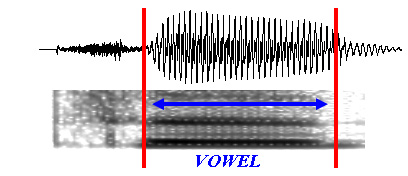


Hyunju Chung,
Jan Edwards, and
Gary Weismer
Dept. of Communicative Disord.,
Univ. of Wisconsin-Madison,
Goodnight Hall, 1975 Willow Dr.,
Madison, WI, 53706
hchung23@wisc.edu
Popular version of paper4aSC5
Presented on Thursday, November 13, 2008
156th Meeting of the Acoustical Society of America


In the first few years of life, most children learn to talk. Children learn to talk whether they are learning to speak English, or Korean, or both at once. If we consider how difficult it is for adults to learn a foreign language, then it is remarkable how quickly and easily young children learn their native language. At 1 year of age, children usually say only a few words such as mommy (“mama”) or bottle (“baba”). At this age, there are many sounds that children cannot say correctly. However, by the time children enter kindergarten they can usually produce almost all the sounds of their native language. At age 5, children typically only have difficulty with a few remaining sounds, such as the initial consonant in rabbit (or wabbit as a 5-year-old might say).
Why is it so easy for children to learn the sounds of their native language when it is so difficult for teenagers and adults to learn to produce the sounds of a foreign language? Why do adults have a foreign accent when they learn a new language, but young children do not? There are many answers to this question, but one of them has to do with vowels. While almost all languages have at least some of the same vowels (in particular, the middle sound in the words, heat-/i/, hot-/a/, hoot-/u/) , these vowel-sounds are produced slightly differently in most languages.

If you listen to these examples of the vowels “aa”, “ee” and “oo” in English, Korean, Greek and Cantonese, you will hear small differences among them, especially for “oo”.
LISTEN: Adult “aa” English--Korean--Greek--Cantonese
LISTEN: Adult “ee” English--Korean--Greek--Cantonese
LISTEN: Adult “oo” English--Korean--Greek--Cantonese
(All vowels are preceded by the same “k” sound.)
As anyone knows who has tried it, it is very difficult to make slight adjustments in vowel sounds when speaking a foreign language. In this study, we focused on the three vowels that are common to so many languages, the “ee”(/i/), “ah”(/a/), “oo”(/u/) sounds, in four languages, American English, Cantonese, Greek, and Korean. We wanted to examine the differences among the four languages for these three vowels for adults and for children. Each vowel has a set of unique “natural” frequencies, much in the same way as a pipe in a pipe organ has a set of natural frequencies. We used measurements of these natural vowel frequencies as objective measures of the vowel quality.

We found that there were systematic differences in the natural frequencies of these three vowels for the four languages when we examined adult productions. For example, the “oo” sound is very different in American English as compared to Cantonese. This is because American English speakers do not round their lips very much for “oo”, as compared to Cantonese speakers. This makes the natural frequencies of English “oo” and “ee” relatively close to one another. In Cantonese, on the other hand, the “oo” and “ee” have natural frequencies that are much more different from each other, as compared to English. We might conclude, then, that there is more chance for listeners to confuse English “oo” and “ee”, as compared to Cantonese “oo” and “ee”. In the world of vowels, a rose is not necessarily a rose, even with the same name!

We also looked at productions of these same three vowels by 2-year-olds and 5-year-olds. You can listen to 2-year-olds producing “aa”, “ee” and “oo” in the four languages. You can hear the same subtle differences across languages that you heard in the adult productions.
LISTEN: 2-year-olds “aa” English--Korean--Greek--Cantonese
We wondered when the children’s vowels would resemble the adult vowels for each language. We were not surprised to find that the natural frequencies of the vowels of the 5-year-olds were very similar to those of adults for each language. We know that 5-year-olds produce almost all of the sounds in their native language, so we would expect this to be true for their vowel sounds.
However, we had predicted that the vowels of the 2-year-olds would not be very close to the adult vowels for each language. After all, these children have only been talking for about one year and we did not think they would have the motor coordination needed to closely mimic these very minor differences between languages. To our surprise, the vowels of the 2-year-olds looked very much like the vowels of the adults! The vowels of the 2-year-old American English speakers resembled those of the adult American English speakers, the vowels of the 2-year-old Korean speakers resembled those of the adult Korean speakers and so on. The only difference was that the 2-year-olds were not as precise – there was more variability in their productions- as compared to those of the adults.

When we see how early children’s vowels resemble adult's vowels, we have to wonder why we wait until middle school to start foreign language instruction in the United States. Children would be much more likely to have a native-like accent if they began learning a foreign language in elementary schools, as they do in so many other countries. More studies on how well very young children can actually mimic vowels in different languages are needed to understand precisely how good children are at producing the fine details of speech sound production.